Web Display Ads – Freedom from Big Tech
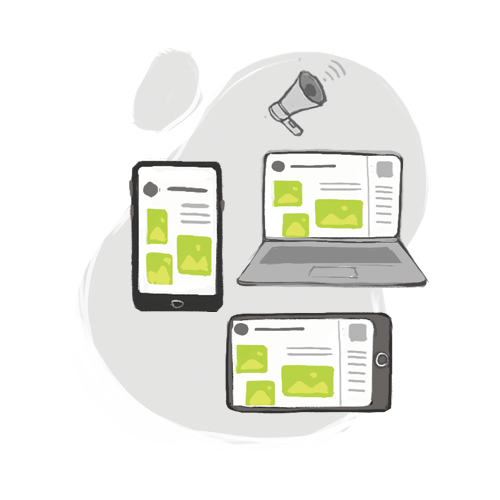
“Is there any way to place ads beyond Facebook and Google?” This is the most commonly-asked question to the Ad360 team. E-commerce businesses commonly feel “trapped,” as if the only places to advertise are these sites. Read below to break through this promotional plateau!
The Restrictions and Limitations of Google & Facebook Ads
While their networks are massive and their reach powerful, platforms like Google and Facebook do have limitations when it comes to online advertising. Their ad networks are “restricted,” meaning any ad campaign you budget only runs ads on their network – nowhere else. You won’t appear on any blogs that 77% of internet users read regularly. You won’t pop up on many mobile apps or games.
This “restricted network” limits your online store’s potential for growth! Even worse, it makes ads appear in the same context, meaning users can more easily “tune them out.” Thus, your options to diversify your advertising strategy for Shopify can feel “trapped” within a single network. If you are having trouble finding success on Google or Facebook, this feeling can be discouraging. If you cannot figure out how to make Google or Facebook work for your Shopify product advertising, where do you turn to!
Programmatic Ads – Access Every Ad Network Across the Web
Simply put, programmatic ads offer you access to the hundreds of networks beyond Google and Facebook – you are free! Finally, e-commerce business owners can use a Shopify advertising tool that opens the entire web to ad placements.
Even better, programmatic ads use powerful software that, after receiving your daily allocated budget, will automatically place ads across the web in the most relevant spots to your business. When it comes to increasing sales on Shopify, there may be no tool better than programmatic ads. You will appear in a variety of online contexts to your customers, becoming memorable and expanding your promotional reach. Customers will be impressed – and consider your business more legitimate – just by the fact they see your ads in so many unique spots! They will assume, “Wow, these guys are all over, huh? I should check them out.” When it comes to increasing sales on Shopify and expanding the reach of your Shopify product advertising, nothing beats programmatic ads.
Ad360 Offers Easy Access to Programmatic Ads
Ad360’s flagship service is Quick Ads, which powers entire programmatic ad campaigns in one click. It really is that simple. Just enter in your daily allotted budget (along with your location), and our programmatic ad software will automate and optimize your campaign across the web. You are officially free from the grasp of tech giants! Check out the power of programmatic ads today, and elevate your advertising strategy for Shopify.
Try for yourself the Ad360 App for Shopify with a 14-day Free Trial!
Maximize Google Ads with 360° Retargeting
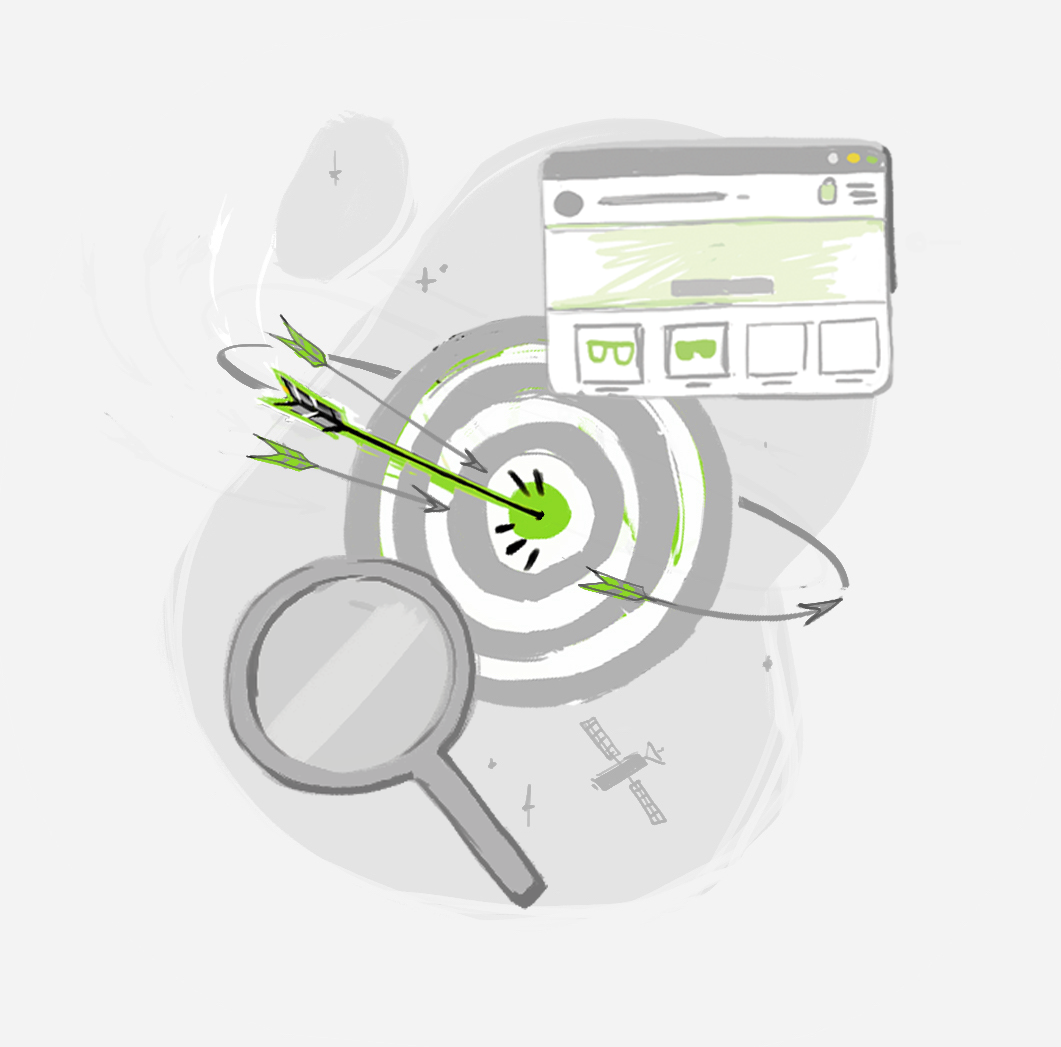
Retargeting Squared: Increase Sales on Shopify with Layered Ad Retargeting
If you have kept up with our previous posts on retargeting (click here, here, and here for a refresher course), you know that retargeting is arguably the most effective digital marketing strategy on the web.
That means for online business owners, learning the fundamentals of retargeting are essential if you want to succeed and increase your sales on Shopify!
However, did you know that there are ways to deploy “layers” of ad retargeting? The value of this tactic is simple: you reach your audience across all search engines and platforms – rather than being restricted to a single network. In other words, layered ad retargeting empowers e-commerce business owners to target users not only on sites like Facebook and Google, but it allows them to continue showing ads to users as they browse the millions of Independent sites across the web.
Check out this post for a 2-step guide on how to layer ad retargeting to maximize conversions and increase your sales on Shopify 😊
Step 1: Ensure you Have Ad Remarketing Enabled on the Baseline Platform
To start, remember that platforms like Google offer their own remarketing programs that can be toggled on. This is a no-brainer. If you are not already using this baseline ad retargeting technique, you are allowing ~98% of all of your web traffic to “fall through the cracks.” With no way of knowing how has visited your site, your digital marketing strategy will continue to feel like “finding a needle in a haystack.”
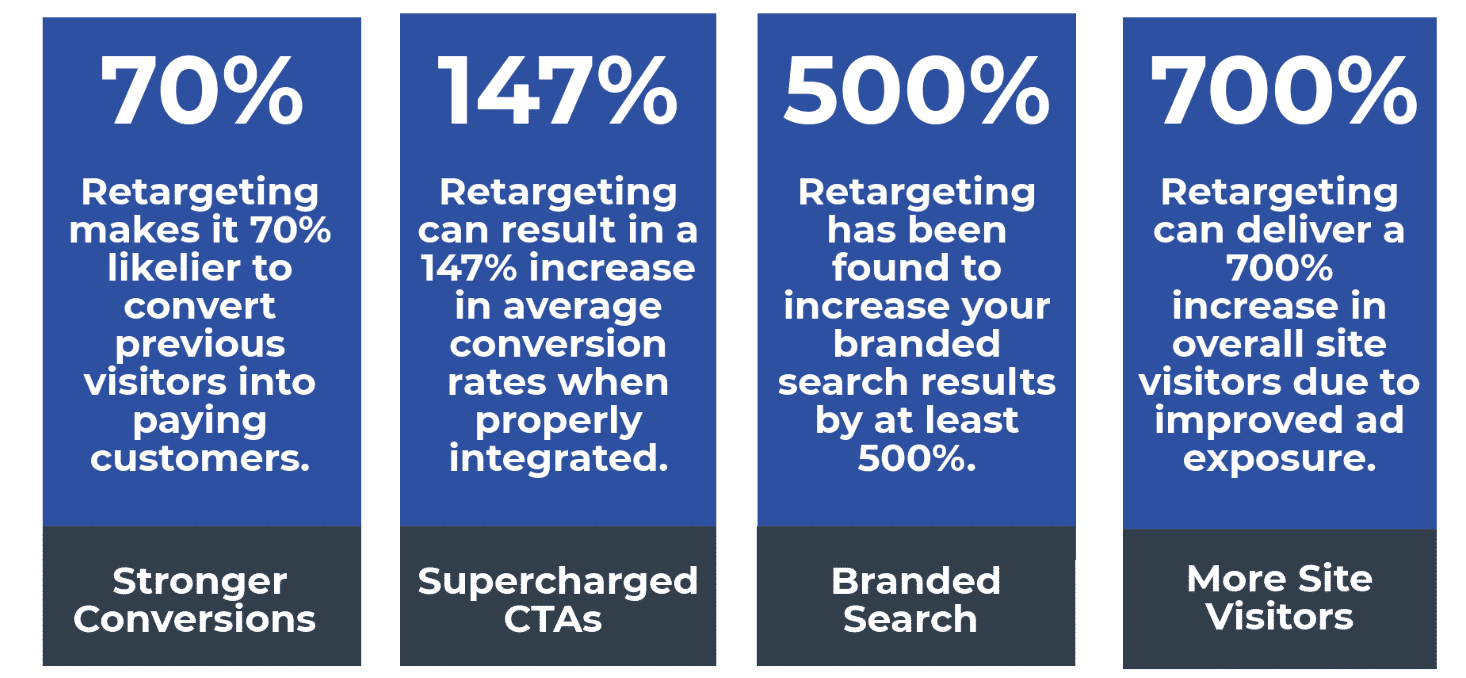
Step 2: Layer Ad Retargeting that Works Across the Entire Web
Now that you have established ad retargeting on the specific platform in question (e.g. – Google), it is time to layer up! Using a simple app, e-commerce owners can reach outside of Google’s network when showing ads to retargeted users.
What this means is that is the user clicks on an independent site not under the Google Display Network, your ads can still be shown to the user! This layered retargeting tactic broadens appeal, and the numbers make a clear case for its effectiveness.
There are currently ~2 million websites linked to the Google Display Network… but there are over 200 million active websites across the web! So, by layering on external ad retargeting on top of Google’s remarketing option, you reach roughly 198 million more sites with your digital marketing. After considering these figures, there is a strong case to be made that layered ad retargeting could drastically increase your sales on Shopify.
Conclusion: Menadex by Ad360 Can Unlock Your Online Store’s Potential
For a quick solution to “layered ad retargeting,” Ad360’s Menadex media offering connects your e-commerce promotions to every active website on the internet. That way, your store can show ads to retargeted customers on websites that your competitors cannot reach, giving you the advantage in brand exposure and customer awareness.
If you want to see the impact that layered retargeting can have on your business, reach out to try a free demo from Ad360! We’ll automatically begin layering in our platform’s “universal ad retargeting” services on top of the ones offered by platforms like Google. Create your next ad campaign with one click, and increase your sales on Shopify today 😊 Happy selling!
Shopify Blogs: The Key to Boosting Sales?
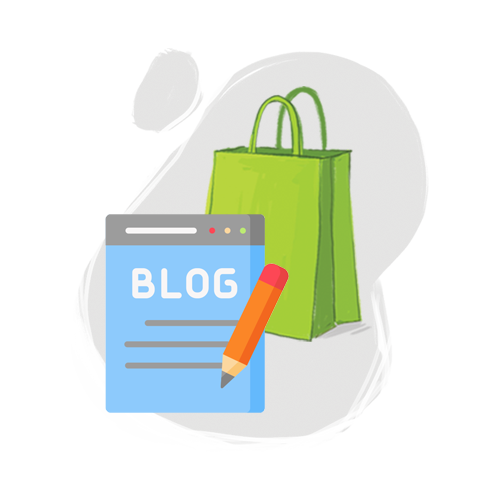
How Blog Content can Increase Sales on Shopify
They say content is king, and for good reason: blogs are a proven method to boost your Google ranking and increase sales on Shopify. This post explores how consistent blog posts can benefit your e-commerce business while also providing a few tips to inspire your own original posts!
Authentic Blogs Support your Shopify Sales
Recently, Google announced that any AI-generated content online will be labelled “spam.” Business owners should reassess the content they are putting out to catch their audience’s audience. Marketing data shows that, while helping increase your Shopify sales, online users primarily read blogs for entertainment and information.
So, when writing your posts, keep an informational, educational, and entertaining tone at the heart of your piece. There’s no need to push your products too hard. Customers who have just discovered your site or product will appreciate quality, authentic posts for their enjoyment. Combined with social media posts and audio-visual entertainment, consistent blog posts can become a crucial element to increasing your Shopify sales.
Blogs Complement Social Media & Video Ads
Think of regular blog posts as an extension of your social media posts. In fact, it’s best to link your Shopify blogs directly on platforms like Facebook, Twitter, and Tik-Tok! All these engaging posts provide a comprehensive narrative you can build regarding your brand and business.
You can embed key infographics, images, and videos into the blog to push your most important audio-visual content across your ad channels. It not longer takes a tech wiz to combine text, picture, and video content, as Shopify has boiled down adding these functions to one click. It’s simple on a technical level, but it does wonders for your reputation online.
An e-commerce store that has an active blog and social media presence appears dynamic, consistent, and trustworthy to your audience. Over time, your Shopify store will increase its traffic and sales by coming across as an authority in your industry. If you can find the time or hire the talent, consistent, quality blog posts will become a key marketing strategy to increase your Shopify sales.
Inconsistent Blog Posts Harm your Google Ranking and Brand Reputation
You ever surf a website, impressed the professional layout, but find that their last blog content post was from 3 years ago…? Not a good sign! It gives the impression the brand is withering, and, despite its clear informational benefit, the business abandoned regular posts.
Not only does infrequent blog posting harm your brand reputation – it costs you ranking on Google’s search engine! Less blogs posts means less webpages for Google to index, and the longer you go without posting, the more you lose authority on Google’s Search Engine.
Even if you can only find time to write a 500 word post – maybe with a video embedded – remember that not each one has to be your magnum opus! Some weeks, it is simply the consistent effort that will benefit your store in the long run. Marketing research shows that e-commerce sites with 11+ blog posts a month experience a spike on monthly traffic. Furthermore, sites with 400+ blog posts archived gain an edge on Google’s search rankings, as the sheer number of webpages indexed bumps them up the rankings ladder! As we all know, a higher spot on Google’s rankings means increased sales on Shopify.

Boast a Call to Action at the End of every post
After providing valuable, entertaining information to your audience for free, drop them a hyperlink or “Call to Action” button at the bottom. In this world, everyone could use a little self-promotion, so have it!
If you want a good “rule of thumb” to follow when deciding what to blog, ask yourself this question: “What would I want to read? What kind of post would I sit back and appreciate someone putting into words for me?” If you know your audience, they’ll appreciate your work, too.
For further assistance and information on the value of blog posts, you can try a free demo by Ad360 today. Our app provides 360 degree coverage on all aspects of your digital marketing, giving you a sense of clarity on how to best promote your product and boost your Shopify sales. See what we did there? 😉 Reach out today!
The Power of a Central Ad Dashboard
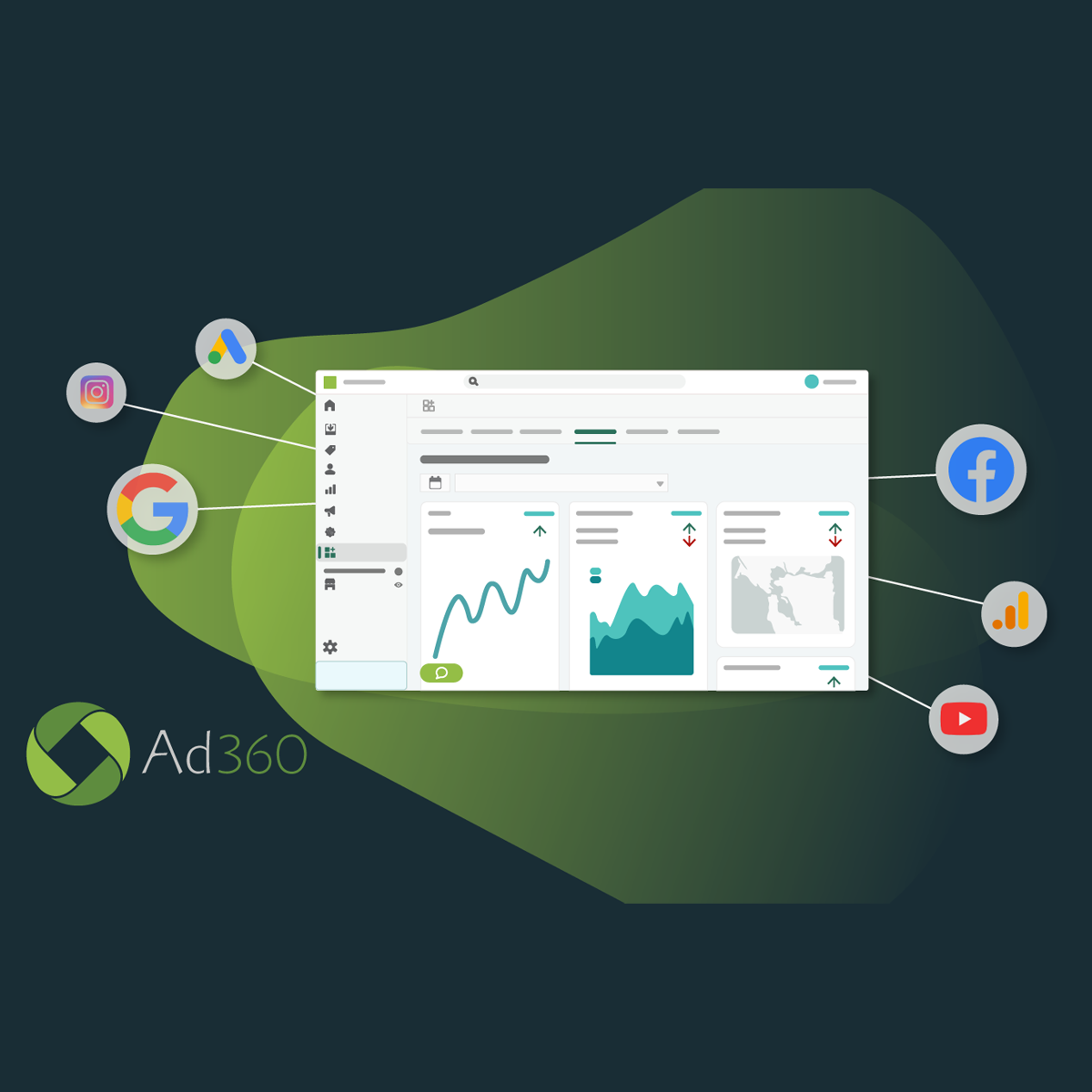
Runnings Ads Across Every Online Platform is Too Complex
There are pros and cons to leveraging multiple online platforms for your ad campaigns.
Web services like Meta (Facebook, Instagram, WhatsApp), Google, Tik Tok, Twitter, and Reddit, reach wide audiences – but each platform’s presentation varies in significant ways. On paper, running ad campaigns across all search engines and social media platforms may seem the best way to boost your brand visibility and increase sales on Shopify!
… It also sounds super complicated. Imagine having to log into each separate ad interface, and learn the idiosyncrasies of all the different sites. Even more, you need to find a way to effectively compare each ad channel while analyzing your digital marketing strategy. Just the thought of lining up sales metrics from these separate ad channels gives us a headache!
That is why Ad360 is here to provide a turnkey solution to managing all your separate channels: a single, streamlined dashboard the brings all your ad campaigns – across every online platform – under one roof. Ad360’s streamlined ad dashboard makes it simple to run multiple ads at once, helping refine your marketing strategy and increase sales on Shopify 😊
The Problem with Disparate Ad Campaigns
Without a central ad dashboard, business owners waste energy simply keeping track of each promotion’s progress. In fact, e-commerce business owners online report that they keep track of their various online ad campaigns through spreadsheets or notes – all manually.
The time drain and effort wasted organizing and comparing each ad campaign is not only inefficient, but it could make that comparison inaccurate!
Entering wrong data or forgetting the rationale for running each ad campaign can make your marketing analysis more difficult or even impossible. Manually entering data in notes or spreadsheet offline basically “disembodies” your data, removing it from the context of your various ad channels. You’re forced to imagine how each ad campaign looks online instead of having them on an interface right in front of you.
It’s a scientific fact that humans only have so much brainpower for decision-making each day. If you are draining all that energy simply trying to keep each ad campaign in order, you won’t have enough left over to effectively compare them!
This “scatterbrain” effect disparate ad campaigns cause could lead to poor mental conceptualizations of your ad campaign’s progress. Instead of being able to simply sit back and think, “How should I allocate my advertising funds from here?” you are bending over backward trying to keep each ad campaign in order. Think of all the questions that would rush into your mind when comparing the success of different ad campaigns:
- Was that ad campaign for brand awareness or boosting conversions?
- Why did I run that ad campaign on Facebook instead of Google again?
- What was different about these two ad campaigns? Was it the visual I used, or was it different text descriptions?
- Why did I pay-per-click for this ad but paid per 1,000 views on this one?
A Streamlined Ad Dashboard – The Key to Digital Marketing Success?
Ad360’s streamlined ad dashboard centralizes all your ad channels to one cozy, intuitive interface. Think of it like consolidating your debt for a lower interest rate – a single central ad dashboard empowers business owners to take their digital marketing to the next level!
Advertising on multiple platform of your choice, and across the entire web – will feel easy. By broadening your reach and focusing your promotional efforts, a single central ad dashboard gives you the best chance to increase your sales on Shopify.
Instead of having to open multiple tabs to check in on each ad campaign’s progress, manually record them in a spreadsheet, and compare the numbers by hand, Ad360’s central ad dashboard automatically records key marketing metrics for you. In doing so, business owners can take a “bird’s eye view” of their overall digital marketing efforts, honing in on key areas to improve their brand message.
Experience Ad360’s Central Ad Dashboard for Yourself
Ad360 offers a free demo to e-commerce business owners trying to improve their digital marketing strategy. Reach out today for a chance to streamline all your ad channels under one roof, along with the ability to create new ad campaigns with a single click. If you’ve ever felt overwhelmed keeping track of your online promotions, give us a call today!
What differs between Clicks, Users, Sessions?

In this video, I’m responding to a question on Reddit about the difference between Clicks, Users, and Sessions on Analytics.
If you’re puzzled too, watch me read and discuss the Google Analytics documentation to make sense of these Advertising and Analytics metrics!
I’m also giving the most probable culprit IMO for this user to have such a massive difference (3x) between clicks and users.
I wish you a lot of success!
Subscribe to Ecommerce Success by Ad360, the channel where we share tips, news, best practices to help business owners be happy, productive, and successful!